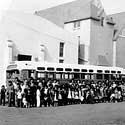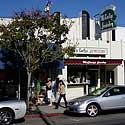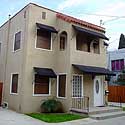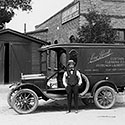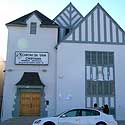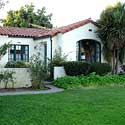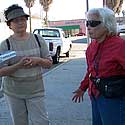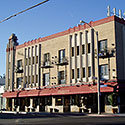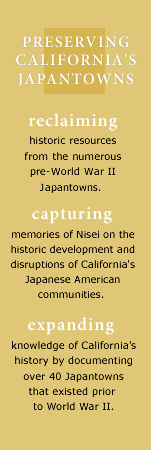 |
Long BeachLong Beach’s Nihonmachi was one of series of Nikkei enclaves in Los Angeles’ South Bay or Harbor District that included San Pedro, Terminal Island and Wilmington. Of these, only Terminal Island held a larger population of residents of Japanese descent. Over 440 residents and dozens of businesses, community groups and cultural organizations made up Long Beach’s Japantown in 1941. Japanese began arriving in Long Beach in the early 20th century and by 1907 almost 200 Issei had established small businesses and farms on land they rented or worked as sharecroppers. The commercial and agricultural foundations of Long Beach’s Japantown continued to grow in the decades before WWII. By the outbreak of the war there were nearly fifty local fruit markets and produce stands and several wholesale produce companies; the Long Beach Produce Market association provided a hub for their activity. Other Nikkei owned stores and businesses that catered to Japanese and customers from outside the community. In fact, Long Beach’s favored status as a tourist destination for Midwesterners seeking sun and shoreline probably offered additional commercial opportunities for local Nikkei. ›› CLICK TO ENLARGE.
PROFILES
| ||||

Constructed in 1925, Long Beach’s Japanese Presbyterian Church at 1333 Locust Street was a center for the community for over fifty years. This 1930s photograph shows a Sunday school class ready for an outing. During WWII, the church building was taken over by the Long Beach Boys Club. The congregation was forced to spend several years after they returned from internment camps pressuring the Club to relinquish the building. Photo courtesy of Aiko and Mas Takashita.

By the late 1980s, the Presbyterian congregation had taken the new name of Grace Presbyterian and moved to a new home on Studebaker Road in Long Beach. The historic building now houses a Latino church.

This structure at 5009 E. 2nd Street once held the Sakura Chop Suey Parlor. Although originally a Chinese dish, chop suey "joints" became a popular niche for many Japanese restaurant operators. By 1941, Long Beach even had a Chop Suey Kumiai (or operators union) at 35 American Avenue, and the majority of local Nikkei restaurants were chop suey restaurants.

The Yamato Produce Company, presumably a wholesale broker for local farmers, was listed at this residence on Pine Avenue.

Prominent Modernist artist Sueo Serisawa made his home in Long Beach after immigrating from Yokahama as a child in 1918. This building's address is listed as "Serisawa Arts" in one pre-war directory.

Our creative and diligent volunteer team for the Long Beach survey included Christeen Taniguchi, Dale Ann Sato and Dorothy Hamade (depicted here) as well as Yvonne Ng, Yukiko Osawa, Charles Igawa, Jay Shaheen and Lisa Hernandez.

Owner Eizo Morita and employees stand in front of the Long beach Curtain Cleaning Company and French Hand Laundry on Redondo Avenue. By the 1930s, the Morito family lived in a house at the rear of the property.

Retail produce markets, particularly fruit stands, were a mainstay of the Japanese American economy in Long Beach. Over fifty produce markets were listed in the 1940 Rafu Shimpo directory. Iwahashi Produce was one of more than a dozen historic produce markets we found still standing.
